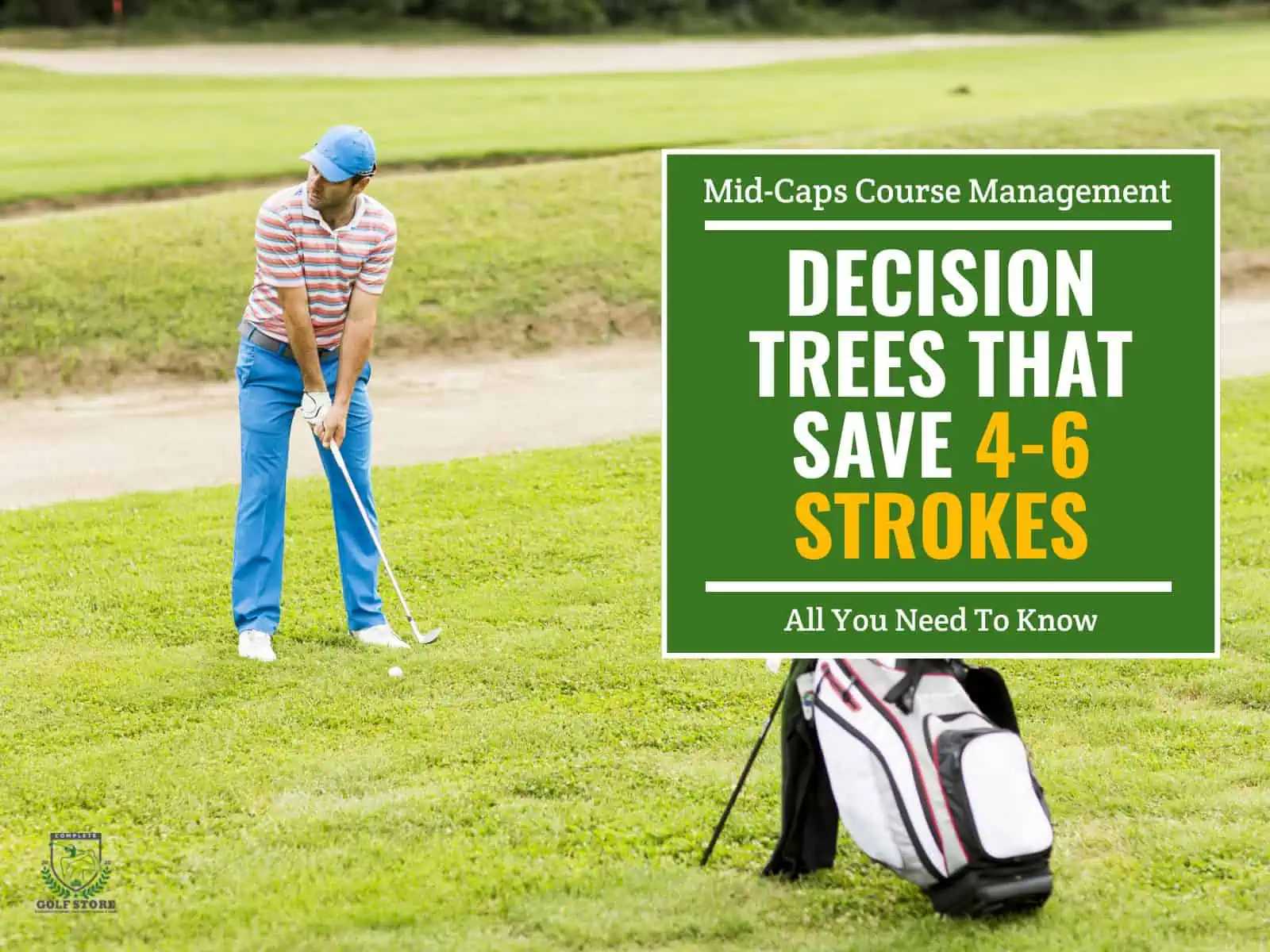Blade vs. mallet golf putters is the classic debate. One offers feel and finesse, while the other brings stability and forgiveness. The stakes are real: choosing the wrong putter for your style could be silently costing you strokes every round.
This guide breaks it all down—head-to-head comparisons, stroke matching, pro insights, and hands-on tips to help you find your putter. By the end of the article, you’ll leave knowing exactly which side of the putter aisle you should stand on.
- 1) Blade vs. Mallet Putters: Quick Comparison Overview
- 2) Performance Differences That Matter on the Green
- 3) Which Putter Suits Your Stroke Type?
- 4) Weight and Balance: A Key Deciding Factor
- 5) Putting Style and Skill Level: What Works Best for You?
- 6) Common Misconceptions and Myths
- 7) Try Before You Buy: The Importance of a Putter Fitting
- 8) Pros Who Use Blade and Mallet Putters
- 9) Best Blade and Mallet Putters of the Year
- 10) Frequently Asked Questions
- 11) Final Thoughts – Making the Right Choice for Your Game
Blade vs. Mallet Putters: Quick Comparison Overview
Before you choose a putter, it helps to know what makes each type unique. Blade and mallet putters serve different needs, and your putting style could make one clearly better for you than the other.
What is a Blade Putter?
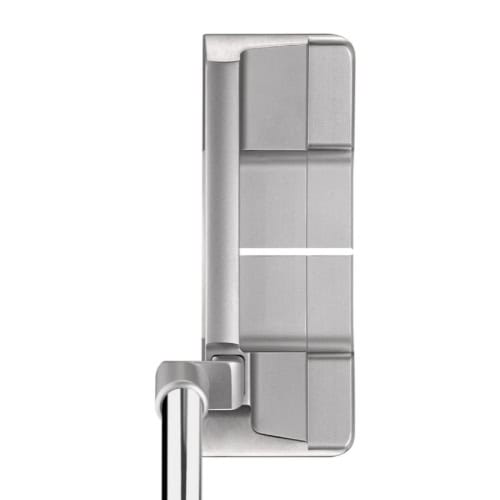
A blade putter is the traditionalist’s choice—narrow and precise. It’s usually toe-weighted, designed for players with an arc-style stroke. Most blade putters are compact with minimalistic alignment aids, focusing on delivering direct feedback with every stroke. They’ve been around for decades and are still trusted by many tour pros for their control and responsiveness.
What is a Mallet Putter?

Mallet putters are broader, bulkier and packed with tech. Their larger head design allows for higher Moment of Inertia (MOI), making them more stable on off-center hits. They’re often face-balanced, which suits straight-back-straight-through putting strokes. Most mallets come with prominent alignment guides, helping golfers aim more consistently.
Key Visual and Structural Differences
| Feature | Blade Putter | Mallet Putter |
|---|---|---|
| Head Shape | Slim, rectangular | Large, rounded or geometric |
| Weight Distribution | Toe-heavy | Evenly distributed or rear-weighted |
| Alignment Aids | Simple or none | Multiple lines or visual markers |
| MOI | Low | High |
| Customization | Minimal | Often high (hosels, weights, face inserts) |
| Stroke Type | Arc stroke | Straight-back-straight-through |
Pros and Cons of Each Type
Blade putters shine in terms of feel and responsiveness. They’re ideal for players with a strong arc stroke who want precise control and prefer a cleaner look at address. However, their smaller head size and lack of alignment aids can make them less forgiving, especially on mishits.
Mallet putters excel when forgiveness and consistency are the priorities. With a higher MOI and built-in alignment tools, they help players keep their stroke on line and reduce the effect of off-center contact. That said, some golfers find mallets too bulky or overly engineered, which can take away from the natural feel of the stroke.
Performance Differences That Matter on the Green
From forgiveness to feel, each style brings something distinct to the putting surface—and knowing how those traits affect your game is crucial.
Forgiveness and MOI (Moment of Inertia)
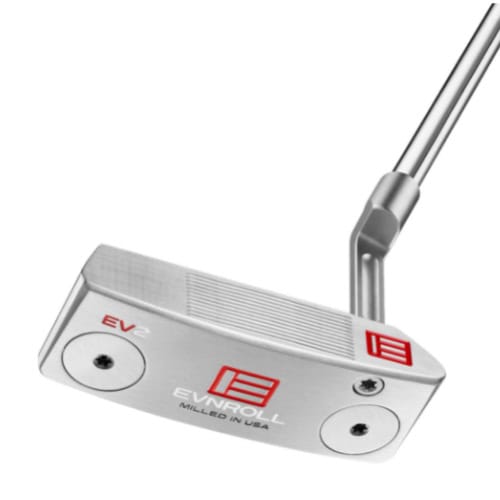
Bladed putters reward precision, but they don’t do you many favors on a mishit. With their smaller heads and lower MOI, off-center strikes can veer offline quickly. That’s great if you’ve got a silky stroke and near-perfect contact, but less so if you’re a beginner or just trying to two-putt.
Mallets, on the other hand, are built like insurance policies. Their larger footprint and weight distribution toward the rear boost MOI, helping the head stay square through impact, even when your stroke isn’t. That means more consistent roll and fewer face-twists on imperfect contact. For players prone to slight mishits, mallets provide a noticeable performance cushion.
Alignment Aids and Setup Visuals
Blades keep it simple. Usually, you’ll get a single sight line or dot—and that’s about it. If you’re confident in your setup and alignment, that’s all you need. But if you struggle to aim consistently, minimalism can be your enemy.
Mallets offer a visual buffet—multiple lines, contrasting colors, even shapes that frame the ball. This helps guide your eyes and square your putter at address. Some golfers say it’s like “putting on rails”. For visual learners or anyone battling aim bias, mallets create a clearer setup.
Feel and Feedback
Blade putters are the feedback kings. Strike it pure, and you’ll feel every buttery millisecond of the roll. Miss even slightly, and the putter lets you know—immediately. For players who value tactile feedback and want a putter that “talks back,” blades are hard to beat.
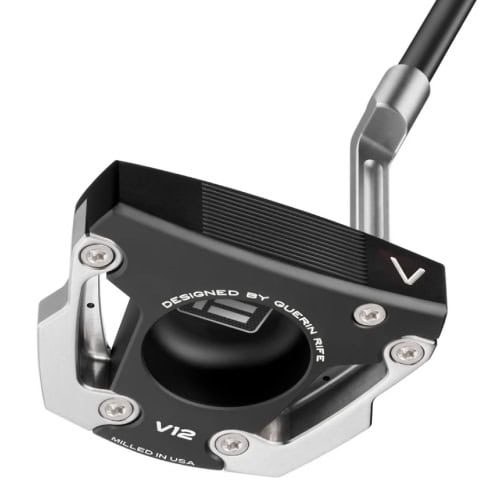
Mallets, while more forgiving, often dampen that connection. The added weight and larger face can reduce the vibration and touch you get with blades. That’s not always a downside. Some players prefer the muted feel (as it can calm nervous hands or provide a smoother stroke). However, if you’re hunting for that crisp, responsive feedback, blade putters still hold the crown.
Which Putter Suits Your Stroke Type?
Blade and mallet putters complement different putting strokes, and knowing which matches yours is half the battle to sinking more putts.
When to Use a Blade vs. Mallet Putter
Choosing the right putter depends on your putting stroke type:
🟢 Use a Blade Putter if:
- You have a strong arc stroke (curved, around-the-body motion)
- You prefer precision and feedback
- You want a lighter putter with more feel
- You can consistently strike the ball well (lower forgiveness needed)
📝 Blade putters are typically toe-hang designs that match natural face rotation in arc strokes.
🔵 Use a Mallet Putter if:
- You have a straight-back-straight-through (SBST) or slight arc stroke
- You want forgiveness on off-center hits
- You prefer visual alignment aids
- You need help with consistency and stability
📝 Mallets are face-balanced, high-MOI designs that minimize twisting and promote smoother strokes.
🎯 Quick Decision Guide:
| Player Type | Best Putter Type | Why |
|---|---|---|
| Beginners | Mallet | More forgiveness and visual help |
| Mid-handicappers | Depends on stroke | Choose based on stroke type and comfort |
| Low-handicap / Pros | Blade (usually) | Better feel and feedback, more control |
| SBST Stroke Style | Mallet | Promotes face stability and alignment |
| Strong Arc Stroke | Blade | Matches toe-hang and natural rotation |
Arc Stroke vs. Straight-Back-Straight-Through
Putters behave differently based on how you move the club. Most golfers fall into two categories: arc stroke or straight-back-straight-through (SBST). The arc stroke curves slightly around the body, while SBST keeps the putter head moving in a straight line back and through the ball.
If you have an arc stroke, you’re naturally rotating the putter head during the swing. This motion works best with a putter that has some toe hang, typically found in blades. The toe-weighted design complements the natural face rotation of an arc stroke, helping you square the face at impact without fighting the putter.
Golfers with an SBST stroke are better matched with face-balanced putters, most commonly found in mallet designs. Face balance reduces face rotation, keeping everything moving square to the target line. If your stroke is more pendulum-like, a mallet will make it easier to repeat consistently.
Blade Putters for Strong Arc Strokes
Blades are the go-to for players who naturally arc the putter. These golfers usually like to feel the head release through the ball.
Blades encourage that release, and their lighter heads let the player control tempo and rhythm more intuitively. Many better players or those who grew up with classic designs prefer this dynamic feel.
Mallets for SBST or Slight Arc Strokes
Mallets suit golfers who rely on straight, square strokes. They’re often face-balanced, which limits twisting and simplifies path control. This helps promote a smoother takeaway and follow-through, especially under pressure. Even players with a slight arc can benefit, especially if they want extra help with forgiveness and alignment.
Weight and Balance: A Key Deciding Factor
A putter’s weight and balance can make or break your consistency. The way a putter feels in your hands—and how it behaves through the stroke—is shaped by these two overlooked but critical features.
Static Head Weight Differences
Blade putters tend to be lighter, especially in the head. That gives skilled players more touch and control over swing tempo. With less mass, it’s easier to manipulate the stroke feel, which is why many experienced golfers love blades for fast greens and finesse putts.
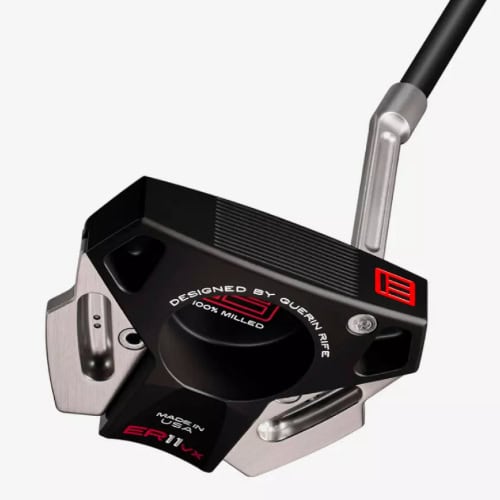
Mallets bring the heat with added head weight. This extra mass promotes smoother, pendulum-like motion. For those who struggle with jerky strokes or deceleration, a mallet’s weight can act as a built-in metronome. It keeps the stroke fluid and helps reduce wrist breakdown at impact.
Counterbalancing in Mallets
Many modern mallet putters feature counterbalancing—adding weight in the grip or shaft to offset the heavier head. This creates a more stable feel overall and can make it easier to keep the putter on plane. Counterbalancing helps smooth out the stroke arc and tame overactive hands.
Not all mallets are counterbalanced, but it’s a popular option for players looking for more rhythm and less handsy motion. Some companies even offer interchangeable weights to get the exact feel you want.
Toe Hang vs. Face-Balanced Design
This is where the putter really matches your stroke. Toe hang means the toe of the putter drops when you balance it on your finger. Blades usually have moderate to strong toe hang, perfect for arc strokes that open and close naturally.
Face-balanced putters, often found in mallets, stay flat when balanced. These are ideal for golfers with a straight-back-straight-through stroke. They resist opening and closing during the stroke, helping keep the face square to the target line.
Ignoring toe hang is one of the most common fitting mistakes. A misaligned toe hang can force you to compensate mid-stroke, adding tension and inconsistency. Matching balance to stroke type lets the putter do the work, freeing you up to focus on pace and aim.
Putting Style and Skill Level: What Works Best for You?
A putter that matches your style and skill level can transform your short game.
For Beginners: Forgiveness Over Finesse
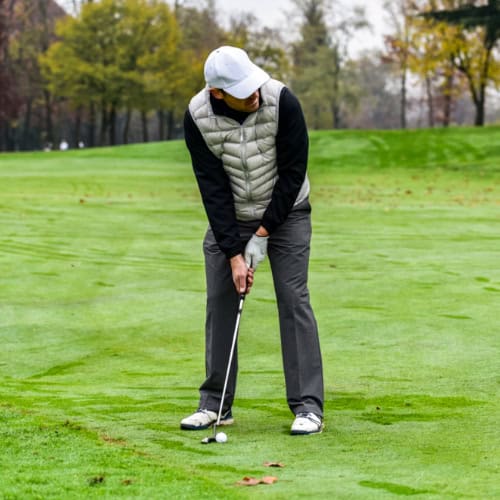
If you’re new to the game, start with a mallet. Its high MOI and generous alignment aids make it easier to square the face and roll the ball on line. The weight helps smooth out twitchy strokes, and the larger profile gives a sense of stability. Beginners often struggle with consistency, and mallets are designed to hide small mistakes without punishing you for them.
For Mid-Handicap Golfers: Finding a Comfortable Fit
If you’ve been playing a while but aren’t breaking par yet, your choice should depend on stroke confidence. If you’ve got a relatively straight-back stroke but still need visual guidance, a mallet with a clean alignment system will keep things steady. If you’re developing feel and want more control over pace and touch, a blade may help you sharpen your instincts.
Mid-handicappers can also benefit from trying compact mallets or heavier blades—hybrid options that provide a bit of both worlds. This is where feel and preference start to carry more weight than just specs.
For Low-Handicap and Tour-Level Players: Precision and Preference
Elite players are rarely restricted by gear—they adapt. Blades are popular at this level for their precision and better feel. When you can read greens well and control speed with touch, the pure feedback of a blade becomes an asset.
That said, some pros swear by mallets (Xander Schauffele, Rory McIlroy, Jon Rahm, Justin Thomas, Patrick Cantlay, Denny McCarthy, etc.) for their consistency under pressure, especially on slick greens. Their strokes are repeatable, and a high-MOI head helps ensure the ball starts on line every time.
Skill level isn’t the only factor—but it’s a major one. Start with forgiveness if you’re learning. Add control as you improve. Let experience, results and feel shape your choice—not just what the tour pros use.
Common Misconceptions and Myths
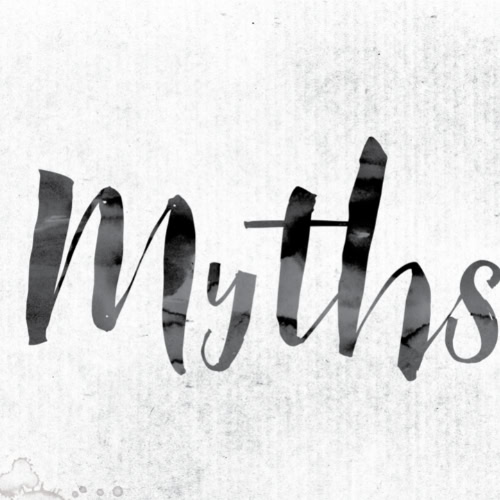
Misinformation can push golfers toward the wrong club, chasing performance gains that never materialize. Let’s clear the air.
“Blades are only for pros” – True or False?
False. Blade putters have long been the weapon of choice for skilled players, but that doesn’t make them exclusive to pros. Yes, they reward a clean stroke and offer superb feel, but if you’re confident in your mechanics, there’s no reason you can’t use one. The key is how well the putter fits your stroke type and comfort level.
Many mid-handicappers fall in love with the simplicity and control of a blade. If you have a strong arc stroke and appreciate feedback over forgiveness, a blade could sharpen your short game, even if you’re not wearing a tour badge.
“Mallets fix bad putting” – The Reality
Mallets are more forgiving, not magic. Their high MOI can help reduce the impact of off-center hits, and their alignment features can clean up your aim, but they won’t fix a fundamentally flawed stroke. If your tempo’s off or your green-reading is shaky, no amount of club tech will bail you out.
Mallets can give you more room for error, but they still need solid fundamentals to truly shine. Think of them as tools that amplify consistency, not correct mechanics.
The Myth of One-Size-Fits-All in Putter Selection
There’s no universal “best putter.” What works for one golfer might sabotage another. Your putting style, visual preferences, grip, tempo, and even green speed all influence which putter feels and performs best.
Copying your buddy’s setup—or a pro’s—because “they drain everything” is a quick way to end up frustrated. Testing different shapes, weights and balances is the only real path to finding what works for your game.
Try Before You Buy: The Importance of a Putter Fitting
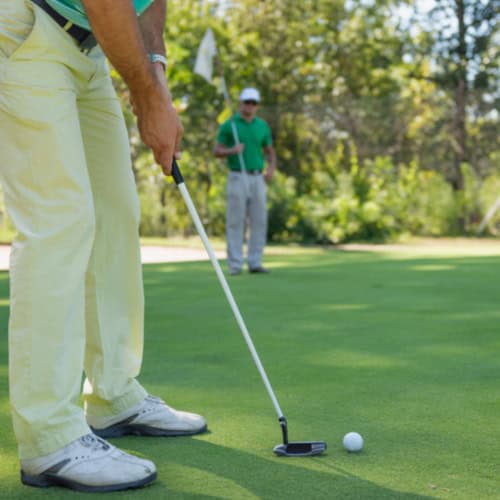
Even the most advanced head design can’t shine if it doesn’t suit your setup, stroke and posture. A proper fitting eliminates guesswork and gets you a club that helps you putt better.
What to Expect in a Putter Fitting Session?
A putter fitting isn’t just about trying clubs on a rack. It’s a short but focused session (usually 30 to 60 minutes) with real-time feedback and data. You’ll hit putts while a fitter evaluates how the putter interacts with your stroke and posture.
Expect to stand over several head shapes, hosel styles, lengths, and lie angles. You’ll often be recorded or measured using launch monitors, pressure mats or cameras. Some fitters even simulate green speeds and breaks to mimic your home course.
Key Data Points Measured
Good fitters track a few core metrics:
- Face angle at impact – Is it square or slightly open/closed?
- Path direction – Arc or straight-back-straight-through?
- Tempo and stroke length – Fast and short, or long and smooth?
- Loft at impact – Are you lifting or dragging the ball?
- Consistency of strike location – Are you hitting the sweet spot?
They’ll also check your eye line, posture and grip pressure. These affect how you see your line and how stable your stroke feels. Many golfers unknowingly lean too far or hunch, skewing their alignment and roll.
Why Feel Should Not Be Ignored?
Data is gold, but feel still rules the green. A technically “perfect” putter won’t help if it feels awkward in your hands. During a fitting, trust your instincts. If a putter looks good, feels balanced and makes you confident over the ball, that matters.
Some players sink more putts with a putter that’s statistically second-best but emotionally first-choice. The brain and hands need to agree.
Pros Who Use Blade and Mallet Putters
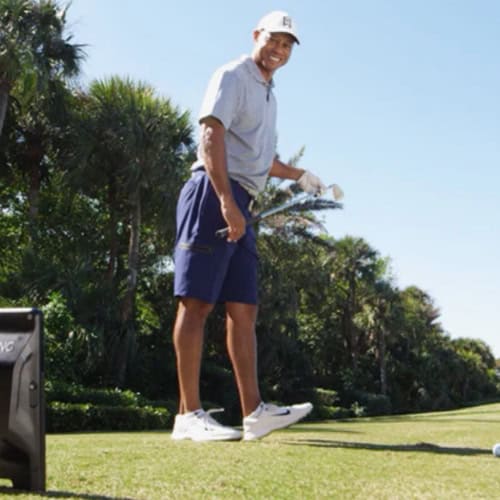
Tour pros obsess over feel, precision and consistency, which makes their putter choices worth noting. While no two putting strokes are alike, analyzing the gear used by top players can give you a glimpse at what works at the highest level.
Popular Blade Users on Tour
Blade putters remain a favorite among players with confident, arc-heavy strokes. Pros who prioritize feedback, touch and refined control often stick with blades.
- Tiger Woods — His Scotty Cameron Newport 2 is arguably the most iconic blade putter ever. It’s helped him win the bulk of his majors, prized for its clean shape and unrivaled feedback.
- Justin Rose — A longtime blade user, Rose values feel and precision. His stroke thrives on the responsiveness a blade delivers on fast greens.
- Collin Morikawa — Known for his consistent iron play, Morikawa’s blade complements his simple, repeatable stroke and demand for tight distance control.
Top Mallet Users and Their Putting Stats
Many elite players opt for mallet putters to take advantage of their forgiveness, alignment and consistency under pressure.
- Rory McIlroy — His TaylorMade Spider X gives him confidence on shorter putts and keeps his stroke square through impact.
- Dustin Johnson — DJ has rotated through various mallets, often favoring putters with high MOI to stabilize his stroke on faster greens.
- Jason Day — One of the earliest adopters of the Spider Tour, Day’s putting resurgence was directly tied to the increased stability of his mallet.
What Can You Learn From Their Setups?
Tour pros select models based on stroke compatibility, confidence at address and feel through impact. Here’s what you can apply:
- Don’t be afraid to try what feels best, even if it’s different from your old go-to.
- Look at your common miss—left, right, long, or short—and see how your putter may be contributing.
- Even pros switch putters when performance dips. Loyalty is great, but results matter more.
Be it a blade or a mallet, success starts with fit. The best putter is the one that frees you up to putt without thinking.
Best Blade and Mallet Putters of the Year
Here are our top-rated blade and mallet putters for this season, based on feel, forgiveness, alignment features, and overall value.
Top 3 Blade Putters for Feel and Accuracy
Here are the three blade putters we recommend you get in 2025:
- Scotty Cameron Special Select Newport 2 – A timeless design trusted by pros and amateurs alike. It offers incredible feedback and clean aesthetics. The milled stainless steel head delivers unmatched precision, and the toe flow is ideal for players with a strong arc stroke.
- Ping Anser 2023 – A modern update to the legendary original. It’s forgiving for a blade and features a soft feel insert. The subtle alignment line and balanced weight make it a reliable option for those seeking control without sacrificing feel.
- Bettinardi BB1 – Precision-milled with a responsive feel. The BB1 blends traditional blade styling with a slightly more forgiving face. It’s a favorite among purists who want quality craftsmanship with every stroke.
Top 3 Mallet Putters for Forgiveness and Alignment
The following are our top recomendations for mallet putters to get in 2025
- TaylorMade Spider GT – A high-MOI mallet with customizable weighting and good alignment tech. The Spider GT is incredibly stable through impact, making it perfect for golfers looking to smooth out their stroke.
- Odyssey White Hot OG 7 – Combining classic Odyssey feel with modern shaping, this mallet features a soft insert and fang-style stability. It’s especially good for players who want a mallet with enhanced forgiveness and visual framing.
- Evnroll ER11v – Renowned for its innovative face technology, the ER11v delivers a consistent roll across the entire face. Its adjustable hosel options also let you fine-tune setup and toe hang.
Frequently Asked Questions
The following are some common questions concerning the blade VS. mallet debate; we answered them to help you make the best choice possible.
What is the main difference between blade and mallet putters?
The core difference lies in head shape and weight distribution. Blade putters are slimmer and toe-weighted, offering greater feedback and precision. Mallet putters are larger, often face-balanced, and provide more forgiveness and stability through the stroke.
Which putter is easier for beginners to use?
Mallet putters tend to be easier for beginners. They offer better alignment aids and higher MOI, making them more forgiving on off-center hits. This helps new golfers develop consistency faster.
Does a mallet putter really improve alignment?
Yes. Mallet putters often come with bold alignment features like multi-line guides or contrasting color patterns. These visuals help you aim more accurately and build confidence at address.
Can I switch between blade and mallet depending on the course?
Absolutely. Some players adjust based on green speed, stroke rhythm or putting confidence. Fast, tricky greens might call for a blade with better touch, while slower or bumpier greens may benefit from a mallet’s stability.
How important is toe hang in choosing a putter?
Toe hang determines how the putter face rotates during your stroke. Arc-style strokes usually need toe-hang putters (often blades), while straight strokes match better with face-balanced options (typically mallets). Ignoring toe hang can lead to inconsistent direction and feel.
Final Thoughts – Making the Right Choice for Your Game
So, blade vs. mallet—what should you use?
The answer lies in how you stroke the ball and what gives you confidence over every putt. If your stroke has more arc and you crave precision and feedback, a blade putter will likely feel like an extension of your hands. If your stroke is straight-back-straight-through or you need help with alignment and forgiveness, a mallet is more likely to deliver consistency.
Ultimately, there’s no one-size-fits-all answer—only the putter that best matches your motion, your eye and your feel. Try both. Get fitted if you can. But above all, trust what gives you confidence. Because the best putter isn’t just the most advanced—it’s the one that helps you believe, commit and sink more putts.
Thanks for reading!




